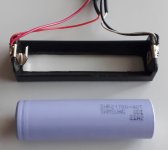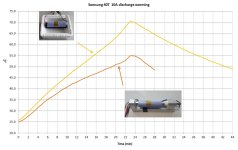Pajda
10 kW
I am not saying that there is no dependency, I am trying to say that there is no general rule to evaluate this dependency (or at least I did not find it). If I use example you can find cell which have after 10% capacity fade ca 30% rise of DCIR (good one) and you can have another cell (with similar datasheet specs) which have after the same measured 10% capacity fade ca 80% rise of DCIR (bad one).
Unfortunatelly this is problem of almost all parameters. You simply cannot generalize the measurement results from one cell to another . In the next thread, docware posted thesis where the author makes excellent scientific work about li-ion cell aging with the cell with one of the shittiest operational life on the market.
. In the next thread, docware posted thesis where the author makes excellent scientific work about li-ion cell aging with the cell with one of the shittiest operational life on the market.
Unfortunatelly this is problem of almost all parameters. You simply cannot generalize the measurement results from one cell to another






